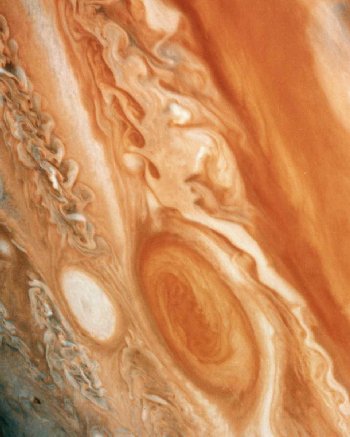The Numbers 1 Thru 10
Today, we wonder what to tell our children about mathematics. The University of Houston's College of Engineering presents this series about the machines that make our civilization run, and the people whose ingenuity created them.
The book, The Beginner's Guide to Constructing the Universe, is by math teacher Michael Schneider [1]. I doubt I'll see the universe quite the same after reading it. It's all about mathematics.
For Schneider, math takes three forms: secular, symbolic, and sacred. We learn secular math in grade school. "If pens cost $1.25 each, how many will ten dollars buy?" -- that sort of thing.
Schneider's concern is with the way symbolic mathematics flows from nature into our art and technology. We sense the number 6 in the hexagons of a honeycomb; 3 in the triangular form of clover; 5 in a cat's pentagonal face; octagonal 8 in the pattern of spider legs. Earth as a whole evokes the number one. We take nature's symbolic forms and build them into our science and our designs.
Mathematics becomes sacred when we let it transform our consciousness. That transformation reflects in the religious use of symbolic math -- the Holy Trinity harmonizes the numbers one and three. The Day of Rest dramatizes the number seven. Schneider doesn't press the point. We can become mathematical mystics if we wish. But his business is to open our eyes to numbers in nature and then help us to understand our response to those numbers.
So the book deals in the rich symbolic content of the numbers one through ten. Those symbols show themselves in two ways: directly in nature, and in art and technology as they mirror nature.
The essential symbol of each number is a polygon with that many sides -- triangles, squares, pentagons, hexagons. The polygon with two sides is only a line. The polygon with one side reduces to a point -- the center of a circle. Schneider then shows how to build up every other polygon from intersections of circles -- so each number is in fundamental harmony with every other number.
Take the number five: On one level, nature shows us fives in starfish, human fingers, the face of a sand dollar and the cross-section of an apple core. We then carry those geometric themes over into the art and science of our own making.
The natural spiral is constructed from a pentagram, and we find those spirals in whirlpools, fingerprints, and the vortex eye of Jupiter -- in galaxies, red cabbage, and the chambered nautilus. That same spiral is also shot through our art and technology. You can use a pentagram, for example, to generate the golden section -- that essential proportion of classical architecture.
After Schneider has done that with each number from one to ten, I find myself back at his starting point -- which is education. We might well weep for the poverty of a math class that never takes us beyond secular mathematics. The full value of math, like any other knowledge, only comes clear when we finally weave it back into the fabric of our whole being. And Schneider has given us just a hint -- of how we might do that for our children.
I'm John Lienhard, at the University of Houston, where we're interested in the way inventive minds work.
(Theme music)
1. Schneider, M.S., A Beginner's Guide to Constructing the Universe: the Mathematical Archetypes of Nature, Art, and Science. New York: HarperPerennial, 1994.
Since this is Episode No. 1111, and it's about numbers, I take the liberty of pointing out a lovely numerical symmetry:
1*1 = 1
11*11 = 121
111*111 = 12321
1111*1111 = 1234321
etc.
For more on just the number 5, see Episode 1243.

Clipart
The "Vortex Eye" of Jupiter